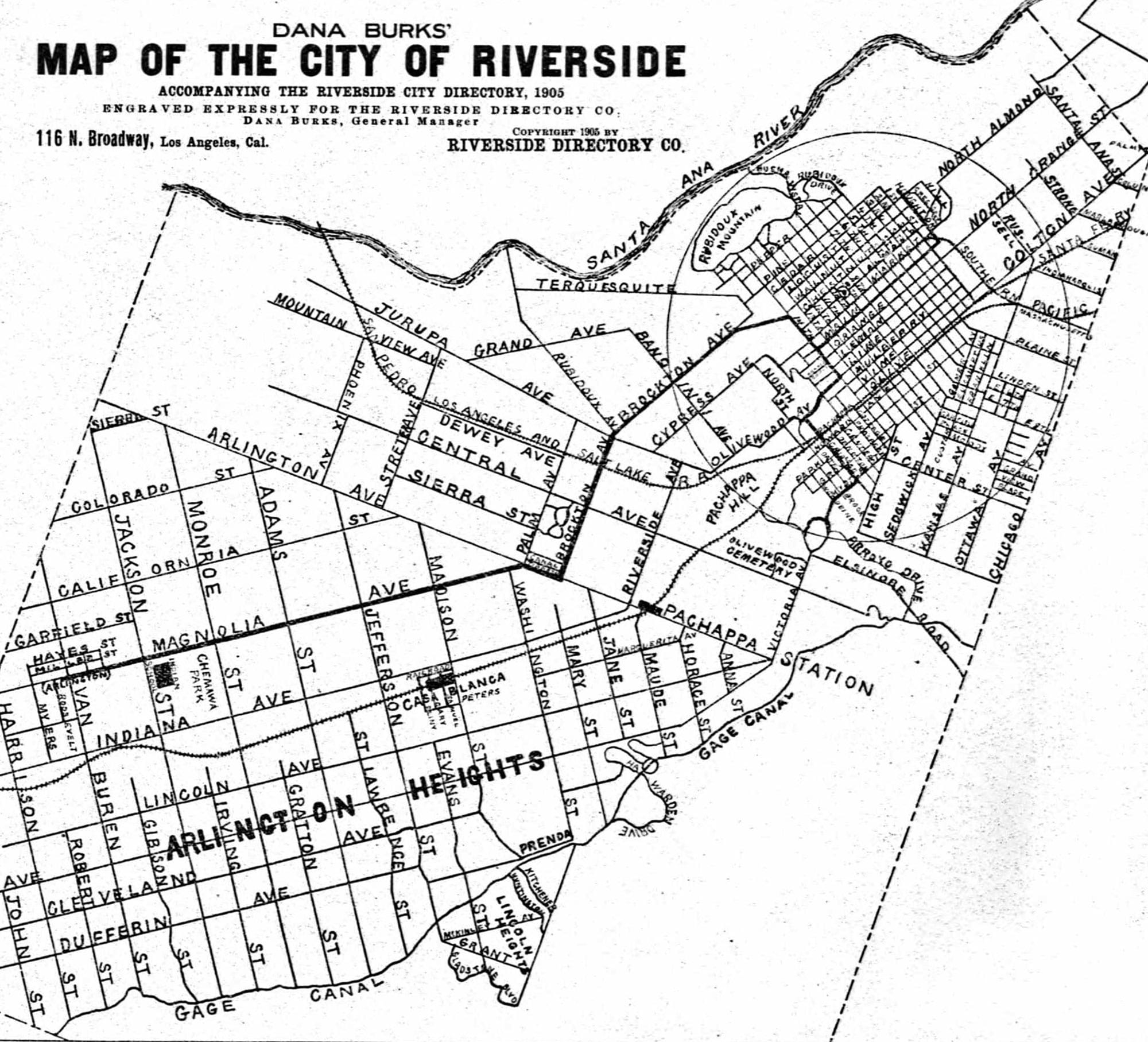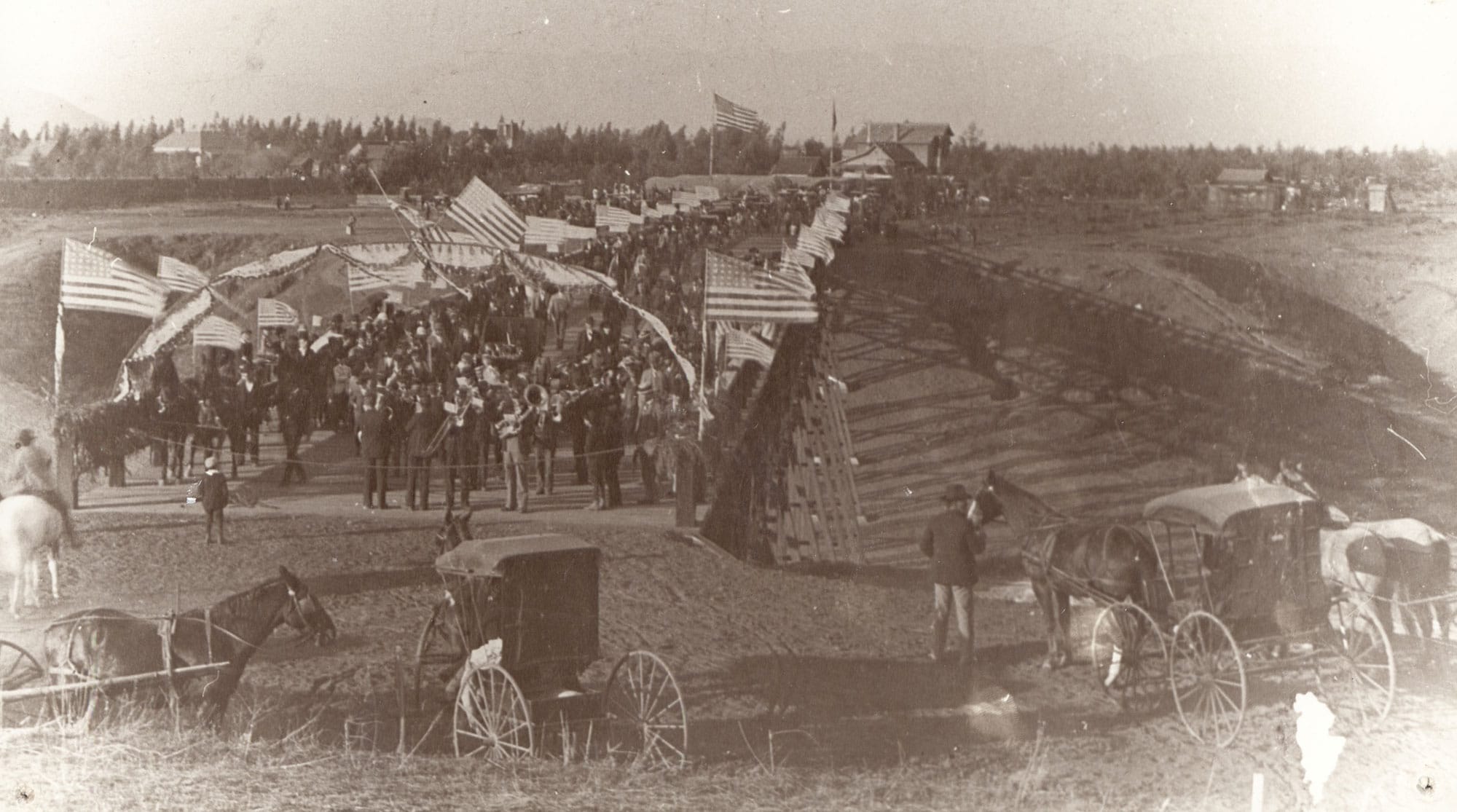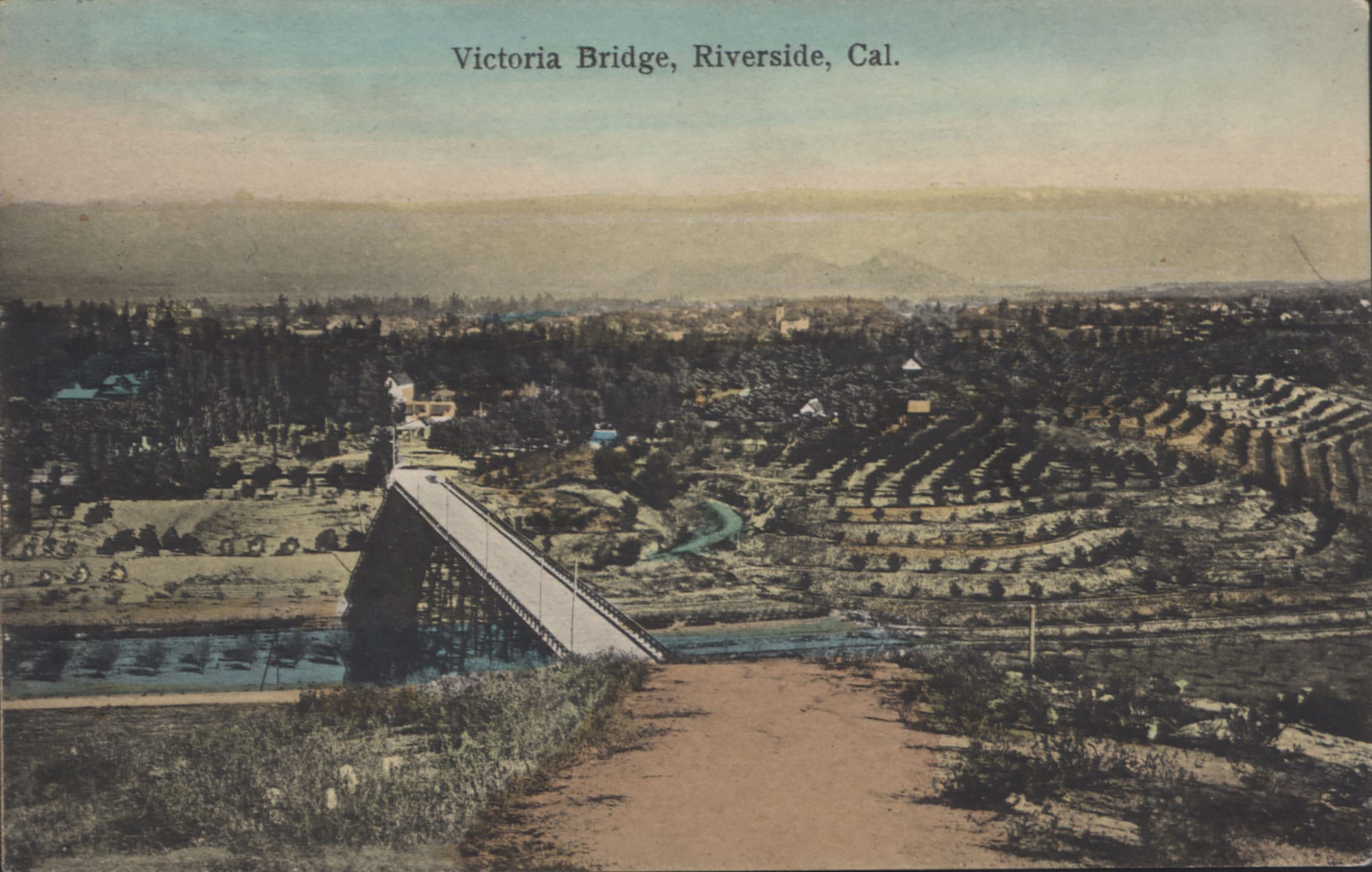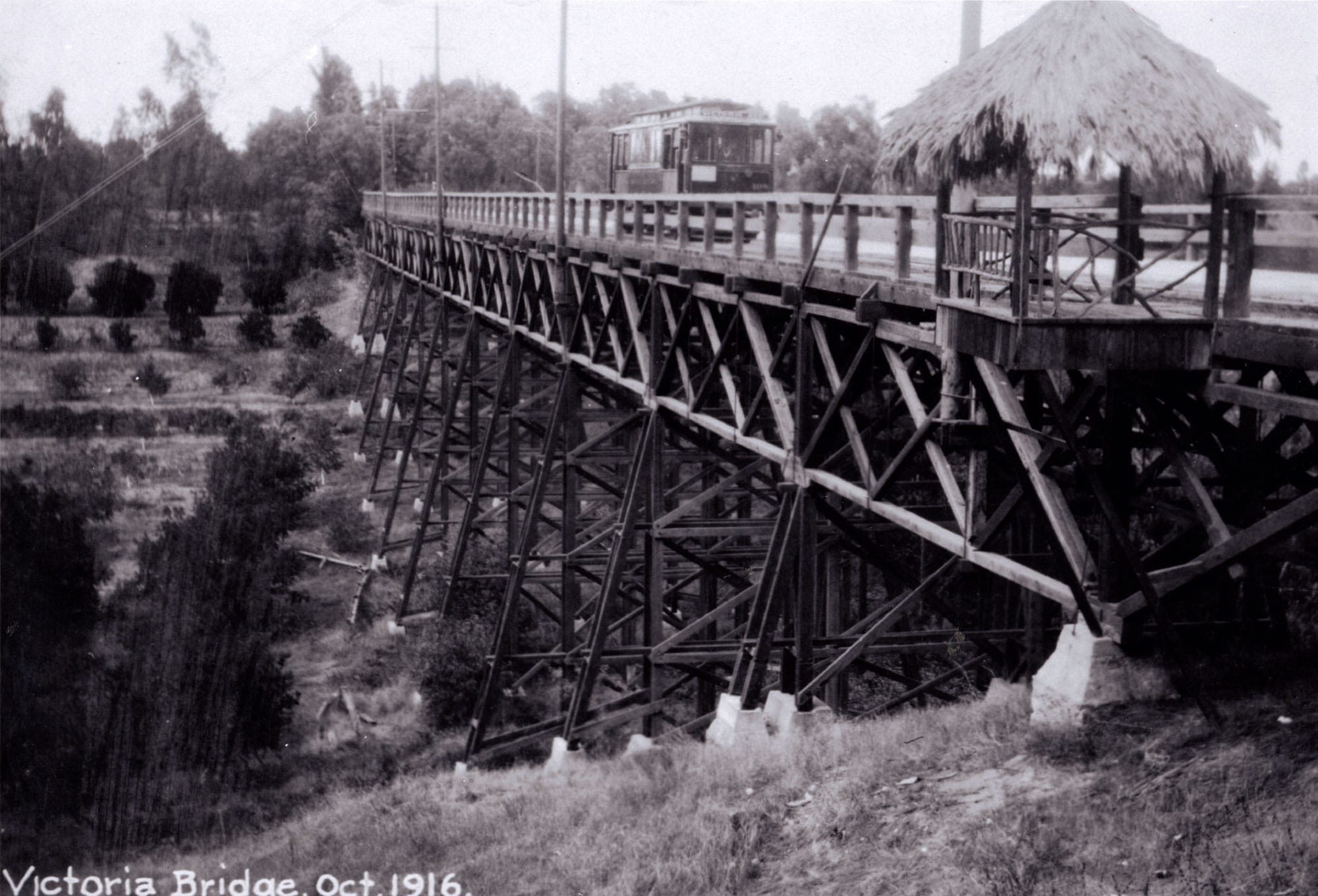Review: RCP's 'A Midsummer Night's Dream' Delivers Laughs Despite Traditional Approach
After 25-year Shakespeare hiatus, Riverside Community Players returns with a comedically strong but conventionally staged production.
When Riverside's Victoria Bridge opened in 1891, it not only connected geographically divided communities but also marked a pivotal moment in the city's urban development.

Riverside's footprint was originally laid out in a square mile of land bordered by First Street, Pine Street, Fourteenth Street, and Olive Street. Access to the downtown area was not always easy as the city expanded away from this original Mile Square. The Tequesquite Arroyo, south of Fourteenth Street, cut off those who settled south of the downtown area.
The largest development south of the arroyo was Arlington Heights. Having built the Gage Canal to water this area, Matthew Gage knew he needed help developing this prime area for homes and agriculture. Gage made a trip to London to secure financial help and, with backing from investors in London, formed The Riverside Trust Company. Along with his brother-in-law, William Irving, Gage began work. He sought and received permission from Queen Victoria to name a grand avenue in her honor. Victoria Avenue was laid out, running through the center of Arlington Heights. Now, Gage needed better access to the downtown area of Riverside.
Another early Riversider and developer was Priestly Hall. Hall’s Addition was a subdivision north of the arroyo built along Cridge Street. He also owned property south of the arroyo on what became Victoria Hill. In 1889, he built his home called Rockledge (2812 Ivy Street) on this property. In anticipation of moving into a new home on the south side of the Tequesquite Arroyo, Hall also saw the advantage of a better route downtown. Hall and Gage worked out a plan in which Hall, in December of 1888, deeded over to the Riverside Trust Company land for the bridge. The land company, in turn, covered the cost of building a bridge over the arroyo at Victoria Avenue.

After plans and the needed funds were gathered, work commenced in September of 1891 with cut timbers at the location and a large crew to rapidly push the span across the chasm. The bridge was designed by William Irving, the chief engineer for The Riverside Tract Company. Work moved quickly, and the announcement was made that the bridge would be dedicated and opened on Thanksgiving Day. The finished bridge was 560 feet long and 30 feet and six inches wide. The greatest height was 60 feet above the arroyo. The design was a cantilever truss using 215 feet of lumber. The bridge was estimated to sustain a weight of 300 pounds per square foot.
On the afternoon of November 26, 1891, Thanksgiving Day, the new Victoria Bridge was formally dedicated and opened. Crowds of Riversiders gathered on both sides of the bridge for the ceremony. Irving acted as master of ceremony and introduced the approximately twenty people, representing various professions and interest groups, who each drove in a silver spike in the final plank on the bridge. Among those chosen were Charles Low, Dr. Shugart, Mrs. Twogood, G. O Newman, Reverend Deere, Mrs. Priestly Hall, Mrs. Matthew Gage, and Samuel Evans. The last sike, a golden one, was driven in by Gage’s 81-year-old mother, Mrs. James Gage.

After the last spike, Irving turned it over to his brother-in-law, Matthew Gage, who was the manager for The Riverside Trust Company. After explaining the purpose of the venture, he concluded: “Ladies and gentlemen, I have much pleasure, in the name of The Riverside Trust Company, in declaring this bridge open for traffic. Use it and enjoy it.”
The first vehicle to cross the bridge was a carriage carrying Mrs. James Gage, pulled across the bridge by her numerous grandchildren. Her ride was preceded by the band and followed by 185 buggies and carriages. This was a grand day for Riverside as two main areas of the city were linked.

The Riverside Trust Company in 1895 offered the bridge to the city. For whatever reason, the deed transferring the Victoria Bridge to the City was not recorded until 1898.
By November of 1900, the Riverside and Arlington Electric Railway line had reached the northern end of the Victoria Bridge but could not cross, as the city engineer had deemed the bridge not strong enough. Work on the bridge during the summer of 1901 strengthened the bridge so that the track was laid across, and the electric line commenced to operate over the bridge, carrying passengers up to the Victoria Hill Country Club.

However, the heavy traffic of streetcars and automobiles took its toll on the bridge. Temporary repairs were made in 1915, but in November 1916, the council faced the question of replacing the bridge. The decision was to authorize funds to repair the bridge again. Meanwhile, a watchman was posted at the bridge to enforce an order that no loads over five tons be allowed and no speed to exceed five miles per hour. Repairs continued, and the bridge was passable until early 1917.
On February 28, 1927, the city council closed Victoria Bridge, declaring it unsafe. Entrances to the bridge on both sides were boarded up, and warning lights were placed on each end. What was to be done? Repair once more or build a new structure? Residents on both sides of the arroyo had to make long detours.
Stay tuned for the next part of the story of the Victoria Bridge.
Let us email you Riverside's news and events every Sunday, Monday, Wednesday, and Friday morning. For free